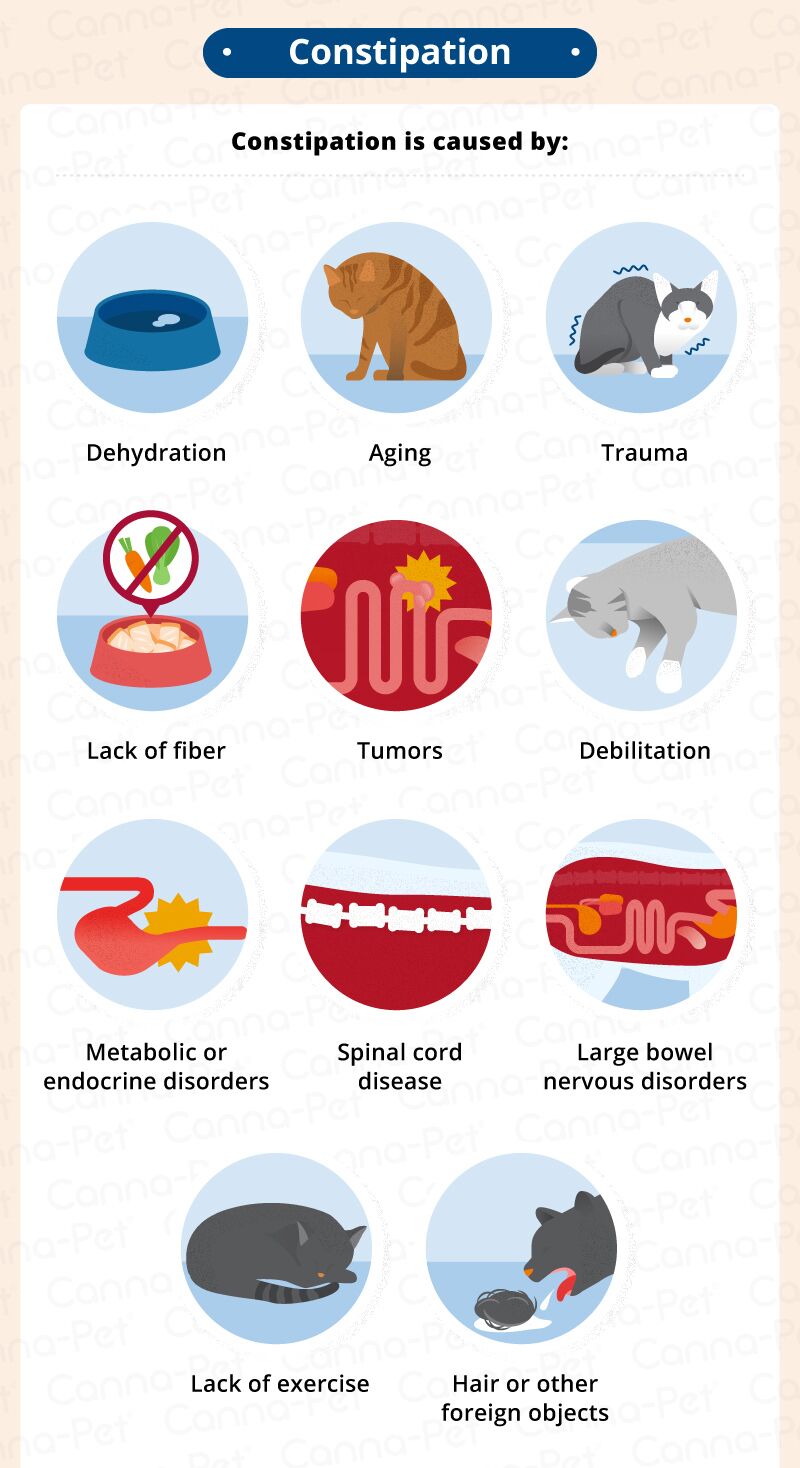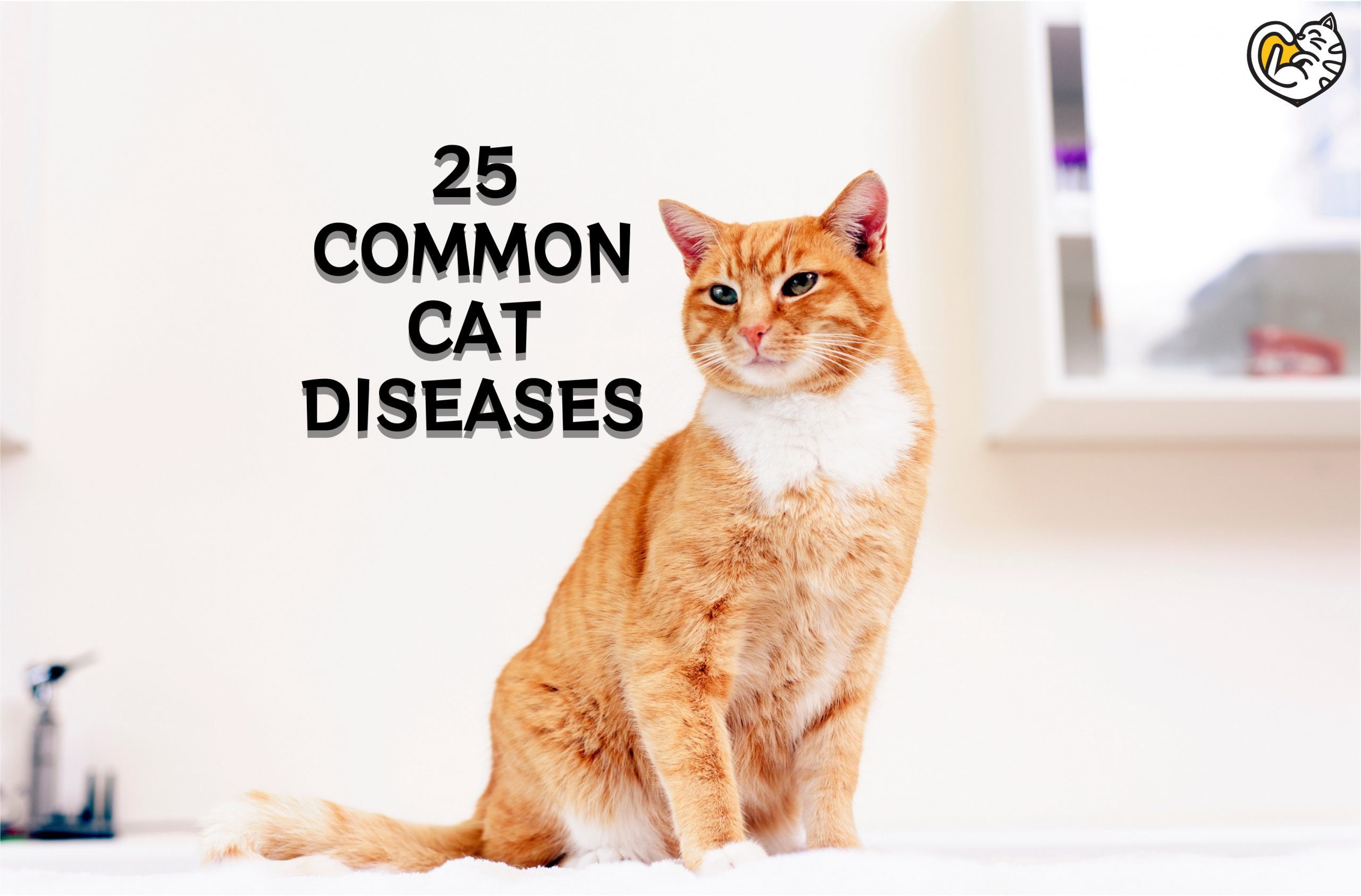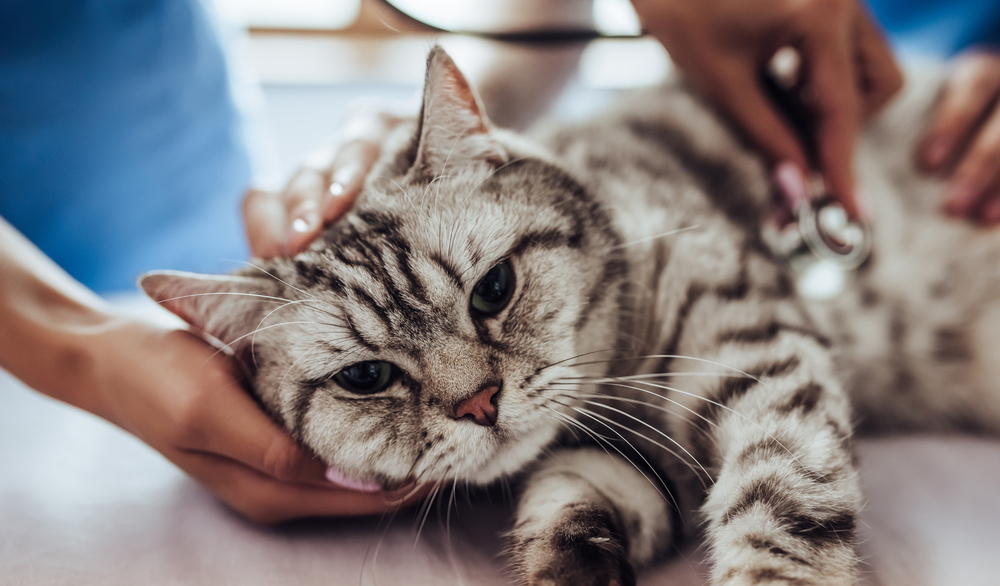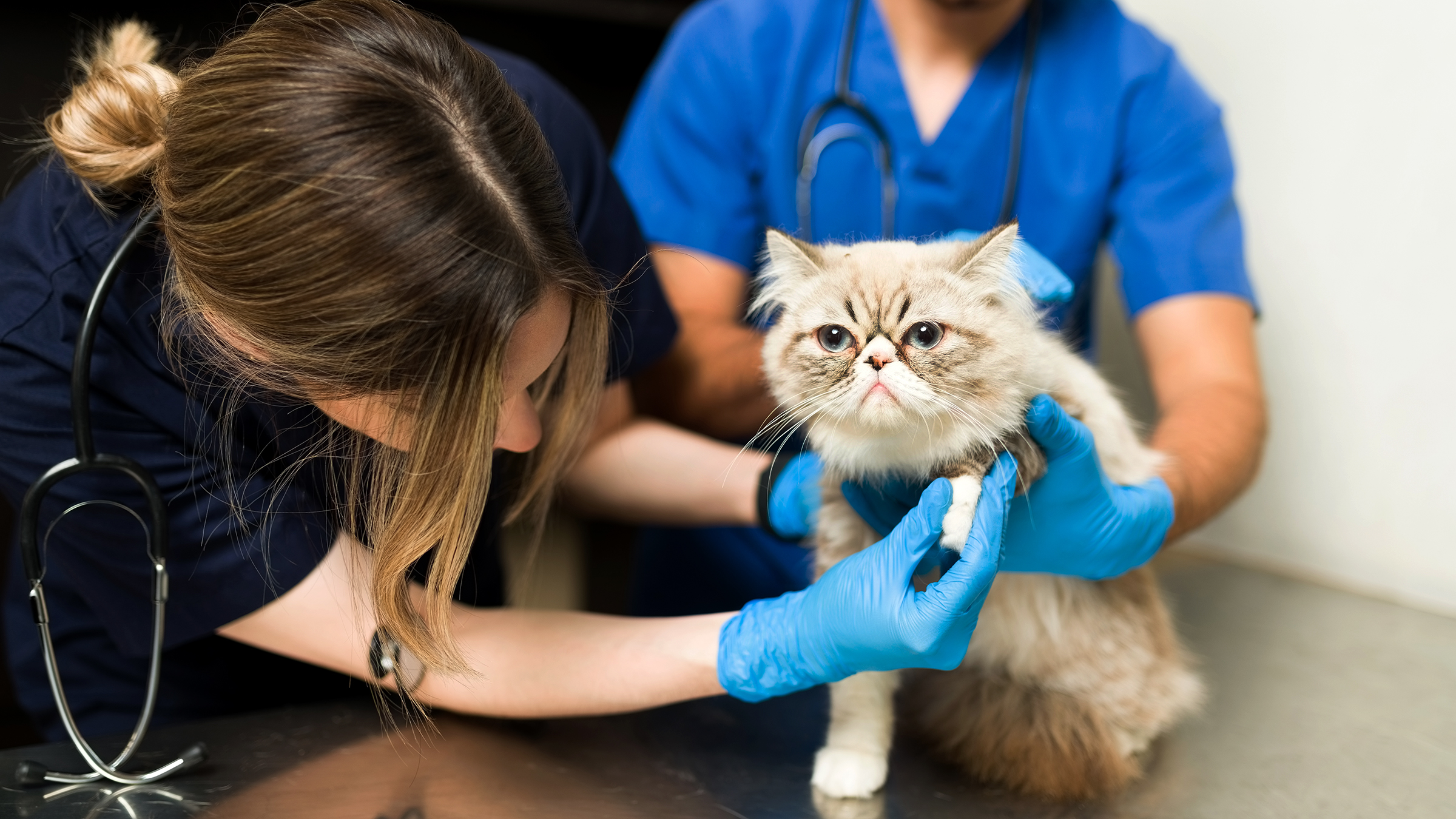Free Shipping On All Orders Over $150.
Causes of Acute Abdominal Pain in Cats
Causes of acute abdominal pain in cats can often be perplexing for pet owners. When a cat exhibits signs of distress, it can be alarming, leaving us to question what could possibly be wrong. The causes can range from mild discomfort due to dietary issues to severe health conditions that require immediate veterinary care. In this article, we will delve deep into the intricacies surrounding feline abdominal pain, exploring the various reasons behind it, how to recognize symptoms, and the appropriate steps to take when faced with such an emergency.
Causes of Acute Abdominal Pain in Cats

Understanding the causes of acute abdominal pain in cats is paramount for any cat owner. There are several underlying factors that can lead to this condition, ranging from infections to injuries. Many of these causes can have serious implications, making it vital for pet owners to be aware of them.
Internal Infections and Inflammation
One of the primary contributors to acute abdominal pain in cats is internal infections and inflammation. Conditions such as pancreatitis (inflammation of the pancreas) or feline infectious peritonitis (FIP) can lead to significant discomfort. These infections may result from bacteria, viruses, or parasites, all of which wreak havoc on a cat's gastrointestinal system.
Internally, the infection can manifest through severe inflammation, leading to swelling and pain in the abdomen. It can also create a toxic environment affecting other organs. For instance, FIP is caused by a coronavirus leading to fatal consequences if not treated promptly. Recognizing these symptoms, such as vomiting, diarrhea, and lethargy, can help you seek timely veterinary care.
Gastrointestinal Blockages
Another critical cause of acute abdominal pain lies in gastrointestinal blockages. Cats are notorious for their playful nature, and they often ingest foreign objects while playing. Items like string, rubber bands, or small toys can pose a choking hazard or create an obstruction in the intestines. This blockage can lead to severe pain, bloating, and even perforation of the intestinal wall.
When a blockage occurs, the normal movement of food and waste is disrupted, leading to further complications. It is crucial to watch for behavioral changes, such as reduced appetite or excessive vocalization, which may indicate a blockage. If you suspect your cat has ingested something harmful, it is imperative to contact your veterinarian immediately.
Dietary Issues and Allergies
Dietary issues are frequently overlooked yet can be a significant source of acute abdominal pain in cats. Food allergies or intolerances can lead to gastrointestinal upset, resulting in pain and distress. Ingredients that once seemed harmless might suddenly cause adverse reactions, leading to symptoms like bloating, gas, or diarrhea.
Moreover, sudden diet changes can trigger digestive problems. Cats can be quite sensitive to shifts in their nutrition, causing their stomachs to react negatively. For this reason, any change in diet should be gradual, allowing your cat's digestive system to adjust accordingly.
Why is My Cat’s Stomach Suddenly Painful?

Recognizing why your cat's stomach might suddenly be painful requires careful observation and an understanding of potential triggers. Cats are known for concealing their pain, which makes it challenging to pinpoint the exact moment discomfort arises. Here, we will explore common reasons that lead to sudden abdominal pain in felines.
Trauma or Injury
Trauma is one of the more apparent causes of sudden abdominal pain in cats. Whether from a fall, road accident, or rough play with other pets, physical injuries can lead to severe internal damage. An impact may cause bruising, ruptured organs, or internal bleeding.
If your cat exhibits sudden reluctance to move, cries out when touched, or shows signs of distress, it may indicate an injury. Always consult with a veterinarian if there is suspicion of trauma, as some injuries may not exhibit visible symptoms initially.
Rapid Change in Environment
Cats are creatures of habit, and they can become stressed or anxious with rapid changes in their environments. Moving homes, introduction of new pets, or disruptions in their routine can lead to increased stress levels, which can, in turn, affect their digestive health.
Stress-induced gastrointestinal issues can manifest as sudden abdominal discomfort, leading to symptoms such as vomiting or loss of appetite. By creating a calm and stable environment, pet owners can help mitigate these stress-related pains.
Sudden Illness or Infection
An acute onset of an illness, such as pancreatitis or a urinary tract infection (UTI), can spark sudden abdominal pain in cats. With conditions like pancreatitis, the digestive enzymes start attacking the pancreas itself, resulting in inflammation and acute pain.
In the case of UTIs, inflammation can cause referred pain to the abdomen. Cats may exhibit signs that appear unrelated to the stomach, such as frequent urination or straining during elimination. Being attuned to these behaviors can help diagnose the underlying issue effectively.
Feline Acute Abdominal Pain Causes

Understanding the various feline acute abdominal pain causes is essential for recognizing the severity of a cat's condition. As discussed previously, the reasons can be categorized into infections, injuries, and dietary issues. However, there are also less common but equally serious causes that pet owners should be aware of.
Pancreatitis
Pancreatitis is a condition where the pancreas becomes inflamed, leading to severe abdominal pain and other gastrointestinal symptoms. The exact cause of pancreatitis remains unknown, but it can be triggered by a high-fat diet, sudden dietary changes, and certain medications.
Diagnosis typically involves blood tests to assess enzyme levels and an ultrasound examination to visualize the pancreas. Treatment often requires hospitalization, intravenous fluids, and a specialized diet to support recovery.
Intestinal Parasites
Intestinal worms and parasites can lead to acute episodes of pain due to the irritation they cause within the digestive tract. Common culprits include roundworms, tapeworms, and hookworms, which can wreak havoc on a cat’s gut health.
Symptoms may include vomiting, diarrhea, and weight loss, along with abdominal discomfort. Regular deworming and preventive treatments can help reduce the risk of parasitic infections.
Cancers and Tumors
The presence of tumors or cancers in the abdomen can lead to acute pain and discomfort in cats. There are various types of cancers that can affect the gastrointestinal tract, including lymphoma and adenocarcinoma.
Unfortunately, these conditions can be challenging to diagnose until they reach advanced stages. Routine veterinary check-ups and monitoring for any unusual changes in behavior or eating habits can help catch these issues early.
Cat Abdominal Pain Emergency Symptoms and Triggers

When dealing with abdominal pain in cats, it is essential to recognize cat abdominal pain emergency symptoms and triggers. Knowing what signs necessitate immediate attention can save your cat's life.
Signs of Distress
Cats display distress in unique ways, and recognizing these signs is pivotal. Known symptoms of abdominal pain include vocalizations, hiding, reluctance to move, and posturing that suggests discomfort, such as crouching or arching the back.
Additionally, take note if your cat stops eating, begins vomiting, or experiences diarrhea. These signals indicate that something may be severely wrong and necessitate urgent veterinary care.
Behavioral Changes
Often, major behavioral changes can serve as precursors to abdominal pain. If your cat has suddenly begun withdrawing from social interactions, becomes aggressive when touched, or displays a lack of grooming, it serves as a warning sign of underlying pain.
Such changes can be subtle yet indicative of significant stress or discomfort. Monitoring your cat's behavior daily can help identify any emerging issues before they escalate.
Triggering Events
Lastly, consider events that may trigger your cat’s discomfort. A recent change in diet, the introduction of new household items (like plants or chemicals), or potential exposure to toxins (such as antifreeze) can contribute to acute abdominal pain.
Being proactive in identifying these triggers can significantly reduce the likelihood of future emergencies. Keeping a journal of your cat’s behavior, mood, and any environmental changes can prove helpful for your vet during assessments.
Sudden Severe Belly Pain in Cats: Common Reasons

Understanding the sudden severe belly pain in cats: common reasons can assist pet owners in determining the urgency of a situation. While many causes are non-life-threatening, some can be incredibly severe, requiring immediate interventions.
Gastroenteritis
Gastroenteritis, or inflammation of both the stomach and intestines, can arise suddenly due to various factors, including infections, dietary indiscretions, or even exposure to toxins. Symptoms often include severe vomiting, diarrhea, and abdominal pain.
Treatment generally involves rehydration and a bland diet under veterinary guidance. However, if left untreated, gastroenteritis can lead to dehydration and further complications.
Urinary Blockage
A urinary blockage can present as sudden, severe abdominal pain in male cats, particularly those with narrow urethras. This condition is extremely dangerous and can quickly lead to kidney failure or bladder rupture if not addressed immediately.
Cats will frequently attempt to urinate without success, show signs of extreme discomfort, and may lick their genital area excessively. Emergency veterinary intervention is required for urinary blockages, as this condition can be fatal.
Hernias
Hernias occur when an organ pushes through the wall of the cavity that normally contains it, leading to acute pain. They can result from injuries, congenital defects, or previous surgeries. Symptoms may include noticeable bulges and extreme tenderness in the abdominal region.
Surgical repair is often necessary to alleviate pain and prevent further complications. If you notice any swelling or unusual shapes in your cat’s abdomen, prompt veterinary evaluation is crucial.
What Causes Acute Stomach Pain in Cats?

As pet owners, it’s natural to ask, what causes acute stomach pain in cats? Identifying the underlying cause can often dictate the course of treatment and management.
Diet and Nutrition
One of the most common reasons for acute stomach pain is related to diet and nutrition. An abrupt change in diet, spoiled food, or ingestion of toxic substances can lead to acute gastrointestinal disturbances.
Cats are obligate carnivores; therefore, their systems are not well-suited to process plant-based foods. Sudden inclusion of inappropriate food items may lead to upset stomachs. Ensuring a balanced diet tailored to your cat's specific needs is key to preventing dietary-related issues.
Toxins and Poisons
Cats are susceptible to various household items that can be toxic. Substances like chocolate, certain plants (like lilies), and cleaning agents can lead to acute abdominal pain. Behavioral changes following exposure to these substances may indicate poisoning, requiring immediate vet assistance.
Recognizing the signs and having knowledge about common household toxins can aid in preventing accidental poisonings and ensure prompt treatment if an incident does occur.
Infectious Agents
Bacterial, viral, or parasitic infections can lead to acute pain in a cat’s abdomen. As mentioned earlier, conditions like pancreatitis or gastroenteritis can stem from infections and require urgent medical attention.
Early detection and treatment are vital for improving outcomes and reducing suffering. Be vigilant about your cat’s health, especially if they exhibit unexplained changes in behavior or appetite.
How to Diagnose Abdominal Pain in Cats

Knowing how to diagnose abdominal pain in cats involves understanding both clinical evaluations and diagnostic procedures performed by veterinarians. Accurate diagnosis is critical for effective treatment.
Veterinary Consultation
The first step in diagnosing abdominal pain in cats is a thorough veterinary consultation. Providing your veterinarian with detailed information about your cat's symptoms, dietary habits, and any recent incidents can greatly assist in determining the cause of pain.
Veterinarians will perform a physical examination, observing the abdomen for signs of swelling, sensitivity, or abnormal masses. Palpation is crucial, as it helps identify areas of pain and discomfort.
Diagnostic Testing
Following the initial assessment, your veterinarian may recommend various diagnostic tests. Blood work, including a complete blood count and biochemical profile, can help uncover underlying issues, such as infections or organ dysfunction.
Imaging techniques like X-rays or ultrasounds are instrumental in visualizing internal organs and detecting abnormalities, such as blockages or tumors. These tests provide valuable information to guide treatment plans.
Further Evaluations
In some cases, additional evaluations may be necessary. A fecal examination can help identify parasitic infections, while biopsies or exploratory surgery may be warranted for suspected malignancies. Whatever the approach, timely and accurate diagnostics are essential for addressing abdominal pain effectively.
Cat Abdominal Pain: Poisoning, Blockage, or Infection?
When considering cat abdominal pain: poisoning, blockage, or infection?, it's important to understand how each of these factors can influence your cat's health and comfort.
Poisoning
Poisoning can occur from various sources, including household cleaners, plants, medications, or foods toxic to cats. Symptoms often include vomiting, diarrhea, drooling, and noticeable discomfort. If poisoning is suspected, immediate veterinary attention is critical to avoid severe consequences.
Treatment may involve inducing vomiting or administering activated charcoal to prevent toxin absorption. Early intervention can significantly improve the chances of recovery.
Blockage
Blockages, whether from foreign objects or accumulated hairballs, can lead to severe abdominal pain and repercussions on the digestive system. Cats may exhibit signs of distress, lethargy, and refusal to eat.
Emergency intervention is often required to remove foreign objects and restore normal function to the gastrointestinal tract. Ignoring signs of blockage can lead to severe complications, including perforation and infection.
Infection
Infections can stem from various causes, including bacteria and viruses, leading to inflammation and pain in the abdomen. Diagnosing infections typically requires lab tests and imaging to determine the underlying agent responsible.
Antibiotics and supportive care will often be required based on the type of infection diagnosed. Maintaining awareness of symptoms can help facilitate timely intervention.
Acute Abdominal Distress in Cats: Vet-Explained Causes
When discussing acute abdominal distress in cats: vet-explained causes, it's essential to recognize the multifaceted nature of this condition. Veterinarians understand that abdominal pain can arise from various health issues, each requiring distinct approaches to treatment.
Gastrointestinal Diseases
Various gastrointestinal diseases can lead to acute abdominal distress. Conditions such as inflammatory bowel disease (IBD) and chronic enteritis can result in persistent pain and discomfort. Recognizing these diseases often involves ruling out other potential causes through diagnostics.
Treatment typically includes medication to manage inflammation and dietary changes to support digestive health. Close monitoring and follow-up care are essential for long-term management of these conditions.
Organ Failures
Acute abdominal distress can also arise from organ failures, such as liver or kidney failure. These conditions can lead to significant pain and require immediate veterinary assessment.
Management strategies often involve supportive care, medication to address symptoms, and dietary modifications. Early diagnosis and intervention can significantly impact survival rates and quality of life.
Surgical Emergencies
Some cases of abdominal distress may result from surgical emergencies, such as torsion of the stomach or spleen. Such emergencies necessitate immediate surgical intervention to prevent life-threatening complications.
Recognizing signs of distress and seeking prompt veterinary care can be pivotal in these situations. Advance preparation can make all the difference in life-threatening scenarios.
Emergency Vet Care for Cat Abdominal Pain Near Me
When facing an emergency involving your cat, knowing emergency vet care for cat abdominal pain near me is crucial. Having a plan in place can significantly reduce stress in dire situations.
Research Local Vets
Before an emergency arises, familiarize yourself with local veterinary clinics and emergency animal hospitals. Many facilities offer after-hours services specifically for urgent care.
Online reviews and recommendations from fellow pet owners can provide insights into the best options in your area. Be sure to keep contact information readily accessible in case of emergencies.
Prepare for Visits
Preparing for a visit to the vet can ease the process during stressful times. Keep your cat's medical records and any pertinent information ready to share with the veterinarian.
If possible, collect samples of vomit or stool, as this information can assist in diagnosis. Being prepared can streamline the process and enable quick interventions.
Remain Calm
Lastly, staying calm during an emergency can help your cat feel more secure. Speak softly and gently to reassure your furry friend, as they can sense your anxiety. Together, navigating the situation with clarity and confidence will lead to better outcomes.
Conclusion
Understanding the causes of acute abdominal pain in cats is an essential aspect of being a responsible pet owner. Whether stemming from infections, blockages, dietary issues, or injuries, recognizing symptoms and taking prompt action can save lives. Being equipped with knowledge allows for better communication with veterinarians and ensures that your beloved feline receives the care they need in urgent situations. Always consult with your vet at the first sign of distress, and never underestimate the importance of maintaining a healthy environment for your feline companion.
0 comment
Be the first to comment